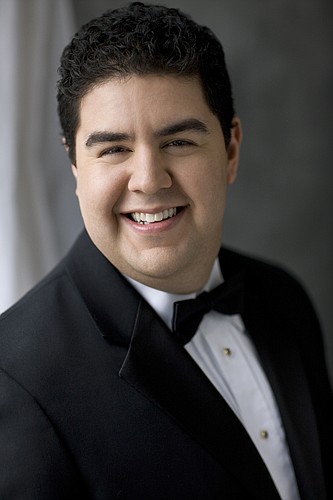- April 25, 2024
-
-
Loading

Loading

Tito Muñoz, who has been assistant conductor of the Cleveland Orchestra and Cincinnati Symphony, led the Sarasota Orchestra in performances of works by Barber, Piazzolla and Rachmaninov this past weekend and knocked the roof off the Van Wezel. This 31-year-old musical architect is a conductor with a vision of the music and a blueprint in his ear that allow him to sculpt, mold and chisel the sound of an orchestra so the music sounds new and, what could be dense becomes clear.
Take the monumental Rachmaninov Symphony No. 2. Lasting about an hour, Muñoz was like an architect, building each phrase so it fit, like a mosaic, into an overall blueprint that turned what could have been opaque into a luminous, translucent sound that shimmered with light. The musicians of the orchestra played with a richness and warmth worthy of world-class ensembles. The spectacularly gorgeous adagio was brought to life, particularly by the splendid playing of clarinetist Bharat Chandra who positively sang his solo, making it sound like the composer’s famous “Vocalise,” milking the richness without ever pulling its long line out of shape. The aggregate result Sunday afternoon brought a spontaneous burst of applause from the audience, something that doesn’t often happen after a slow movement.
There were solos galore throughout the Rachmaninov, each played with a care that belied the energy that underscored even the softest passages. Breathtaking, mesmerizing and inspired hardly convey what happened in this performance. It was a short hour.
That’s how this all-20th century concert ended. It began with a fresh, clean, colorful reading of Barber’s zesty overture to “The School for Scandal.” Catching the wit, fun and sarcasm of the composer’s nod to the 1777 comedy of manners by Sheridan, Barber wrote everything from impishness to romantic flirtations into his score. With characters like Lady Sneerwell and Snake inhabiting this 18th century play, Barber had to color his music with playfulness. Muñoz and the orchestra caught the color and fun, giving us some beautiful playing, especially by English horn player Michael Austin.
In the middle was the fantastic “Las Cuatro Estaciones Porteñas,” (aka The Four Seasons of Argentina) based on a quintet by Argentinian composer Astor Piazzolla, and arranged for orchestra and violin solo by Leonid Desyatnikov. Giora Schmidt who, like Muñoz, is 31, made a showpiece out of this showstopper, playing with the various fun sounds written for him and the orchestra: slaps, slides, hiccups and zings that were spine-tingling and belly-tickling. It’s a wonderful piece, worthy of more hearings. Schmidt, reading the music from his iPad and turning its pages by stomping on a wireless pedal on the floor, positively lit the music with a tone that was never less than beautiful, while managing to infuse it with a full-bodied richness showing him to be a virtuosic player.
I left the hall with four impressions: Schmidt is a terrific violinist; Muñoz, who now has his own orchestras here (Ensemble LPR in New York City) and abroad (Opera National de Lorraine and L’Orchestre symphonique et lyrique de Nancy), is headed to the top and probably will be at the helm of a major, big-budget orchestra in the near future; the Sarasota Orchestra is positively blooming; and I can’t get that slow movement theme from the Rachmaninov out of my head.